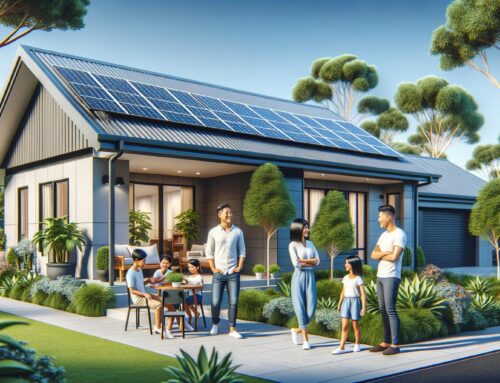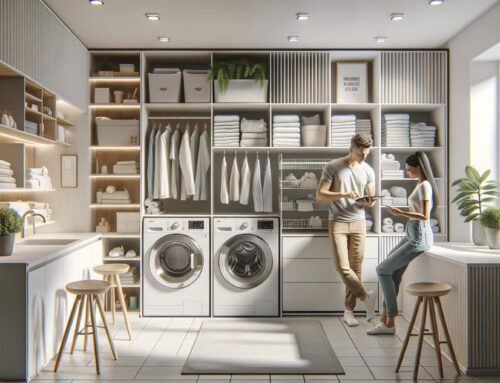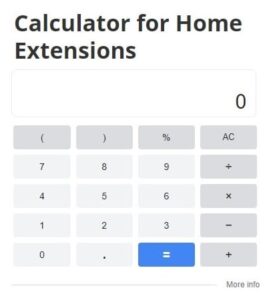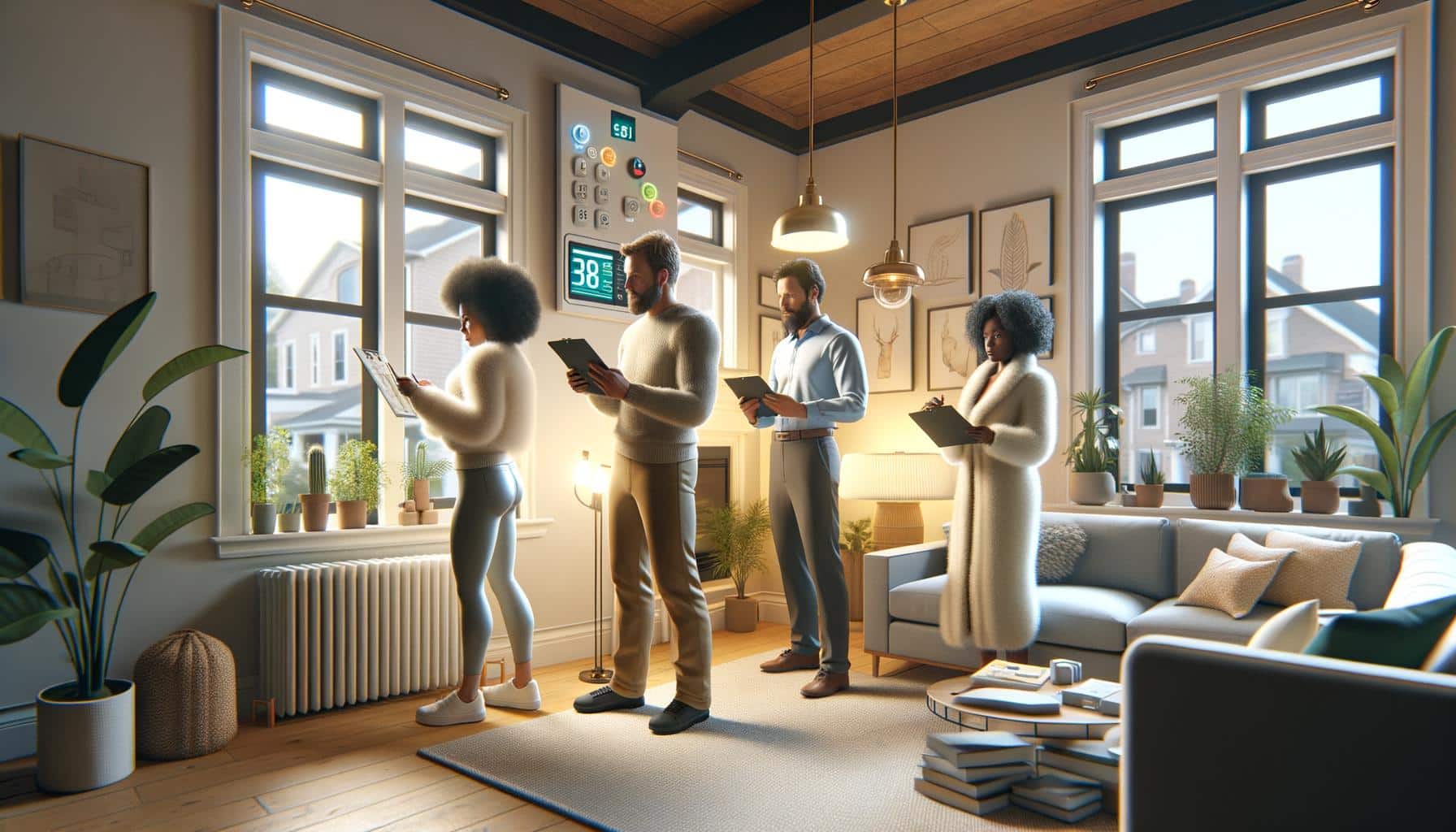
Rising energy costs hit homeowners hard, with the average U.S. household spending $2,060 annually on utilities according to the Energy Information Administration. A home energy efficiency assessment identifies exactly where your money disappears.
We at Home Owners Association see homeowners slash their energy bills by 10-30% after completing thorough assessments. This guide walks you through the entire process, from initial inspection to final improvements.
What Exactly Is a Home Energy Assessment
A home energy efficiency assessment systematically examines your property and identifies specific energy waste sources while quantifying potential savings. Professional assessments provide comprehensive analysis of your home’s energy performance through detailed evaluation processes. The process includes blower door tests that measure air leakage, thermal cameras that spot heat loss patterns, and detailed appliance efficiency evaluations.
Major Energy Loss Categories
Your home loses energy through four primary channels that assessments target. According to research findings, global building operation accounted for 30% of global final energy consumption and 27% of total energy sector emissions. HVAC system inefficiencies contribute another 40-50% of total energy consumption. Water heaters represent 18% of average household energy use, while lights and appliances consume the remainder. Professional assessors use specialised equipment like combustion analysers and infrared thermometers to measure exact efficiency levels in each category.
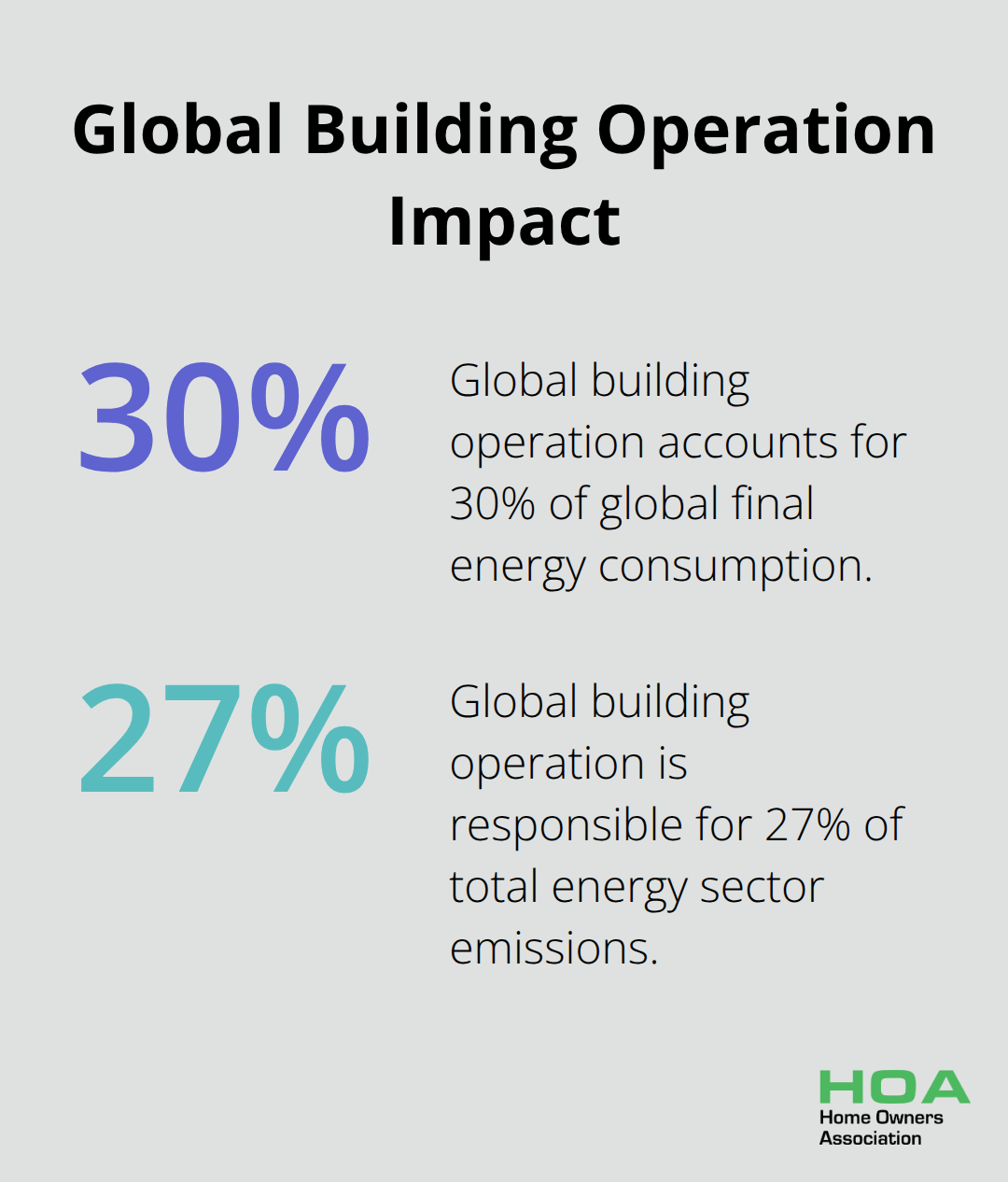
Professional Assessment Advantages
Professional energy auditors deliver measurably superior results compared to DIY approaches. Certified assessors complete 40+ hours of specialised training and use $15,000-$25,000 worth of diagnostic equipment (including blower doors, thermal cameras, and digital manometers). The Home Energy Rating System shows professional assessments identify 35% more energy-saving opportunities than homeowner self-evaluations.
Assessment Report Components
Professional reports include specific upgrade recommendations with projected savings calculations and payback periods. Most utility companies offer rebates that cover 50-75% of professional assessment costs, which makes the investment financially sensible for serious energy reduction goals. These detailed reports prioritise improvements based on cost-effectiveness and potential energy savings (typically ranked from highest to lowest impact).
The next step involves understanding exactly how assessors inspect each critical area of your home to identify these energy waste sources.
How Do Professionals Inspect Your Home
Professional assessors begin with the building envelope inspection and use specialised equipment that homeowners cannot access. Thermal cameras reveal temperature differences as small as 0.1 degrees Celsius and expose hidden insulation gaps behind walls and around electrical outlets. The blower door test pressurises your home to 50 pascals while infrared cameras map air leakage patterns – conditioned envelope results in direct energy losses through air leakage. Assessors measure insulation R-values with resistance meters and check for compression damage that reduces effectiveness up to 50%. Missing weatherstripping around windows and doors typically accounts for 10-15% of total energy loss in most homes.
HVAC System Performance Analysis
Heating and cooling systems undergo comprehensive efficiency tests with combustion analysers and digital manometers. Assessors measure actual airflow rates against manufacturer specifications – HVAC cleaning evaluates effectiveness on energy consumption and supply airflow patterns. Ductwork inspection reveals that 20-30% of conditioned air escapes through poorly sealed joints and connections. The equipment evaluation includes heat exchanger efficiency tests, refrigerant charge verification, and thermostat calibration checks. Older systems that operate below 78% efficiency should receive immediate replacement recommendations, while duct sealing can improve system efficiency 15-20% for under $500 in most cases.
Window and Door Assessment
Assessors use U-factor meters to measure actual heat transfer rates through windows and compare results against Energy Star standards. Single-pane windows transfer heat at rates 2-3 times higher than double-pane alternatives, while poorly sealed frames add another 25% to heat loss. Professional assessors examine door seals and frames for gaps that allow conditioned air to escape (particularly around thresholds and weatherstripping areas). They also test window operation mechanisms and check for proper installation that affects both energy efficiency and structural integrity.
Lighting Efficiency Evaluation
Light meter readings identify areas where insufficient natural light forces excessive artificial lighting use during daytime hours. Professional assessors calculate exact wattage consumption for each lighting zone and recommend LED conversions that reduce lighting energy use 75% while they improve light quality and reduce heat generation that burdens cooling systems. They also evaluate lighting controls and timer systems that can automatically reduce energy waste when rooms remain unoccupied.
Once assessors complete these detailed inspections and compile their findings, homeowners receive comprehensive reports that prioritise specific improvements based on cost-effectiveness and energy savings potential. Professional inspections provide valuable insights that help homeowners make informed decisions about their energy efficiency investments.
How Should You Prioritise Energy Improvements
Professional assessment reports rank improvements by return on investment, but smart homeowners focus on quick wins first. Air sealing delivers the highest immediate impact – homeowners seal gaps around outlets, baseboards, and penetrations for under $200. Weatherstripping replacement on doors and windows provides similar savings for $50-$150 per opening. LED lighting conversions offer 75% energy reduction and pay for themselves within 12 months through reduced electricity costs.
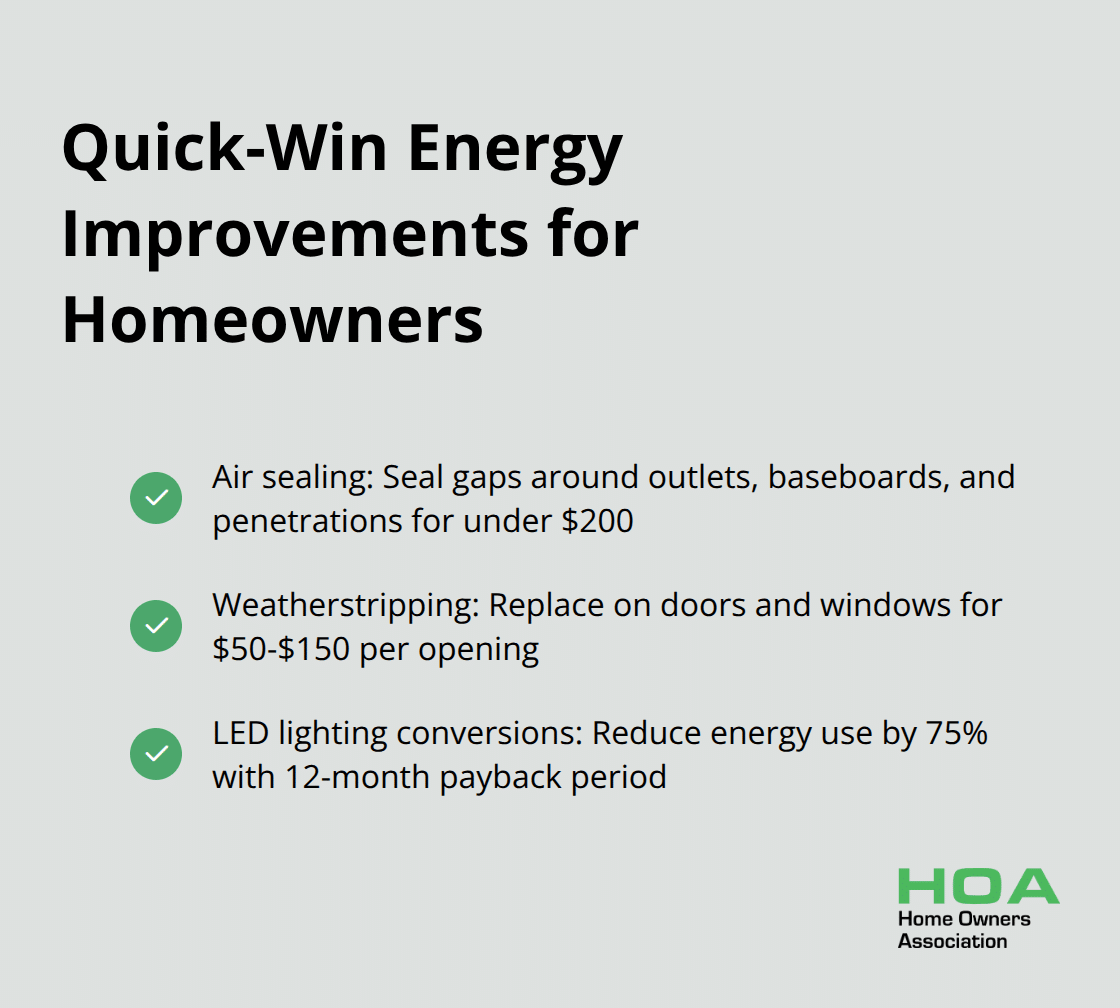
Target High-Impact Areas First
Start with the building envelope before you tackle expensive equipment upgrades. Attic insulation improvements cost $1,500-$3,500 but reduce heating and cooling costs 15-25% immediately. Basement rim joist insulation takes one weekend and cuts energy loss through foundation areas by 30%. Window film installation blocks 99% of UV rays and reduces cooling loads 10-15% for $3-$7 per square foot (professional installation recommended for best results).
Find Contractors Who Deliver Results
Skip general contractors for energy work – specialised energy efficiency contractors complete projects 40% faster with measurably better results. Check certifications through the Building Performance Institute or Residential Energy Services Network, as certified contractors access utility rebates that uncertified workers cannot obtain. Request three detailed quotes that include specific energy savings projections and material specifications. Contractors who provide vague estimates or refuse to guarantee performance metrics typically deliver substandard work.
Maximise Available Rebate Programs
Federal tax credits cover 30% of solar installations and heat pump upgrades through 2032, while utility companies offer rebates for insulation, duct sealing, and appliance replacements. DSIRE is the most comprehensive source of information on incentives and policies that support renewables and energy efficiency in the United States. Apply for rebates before you start work – most programs require pre-approval and specific contractor certifications. Combine federal, state, and utility incentives to reduce project costs 50-70% on major improvements like HVAC replacements or comprehensive insulation upgrades.
Secure Low-Cost Financing Options
Energy efficiency financing programs through utilities offer 0-2% interest rates that make expensive upgrades affordable with positive monthly cash flow from day one. Property Assessed Clean Energy (PACE) programs allow homeowners to finance improvements through property tax assessments over 10-20 years. Credit unions typically offer energy efficiency loans at rates 1-2% below conventional home improvement loans, while some manufacturers provide zero-interest financing on Energy Star appliances and HVAC systems.
Final Thoughts
Regular home energy efficiency assessments transform your property into a money-saving powerhouse while they protect the environment. Homeowners who conduct annual assessments maintain peak efficiency and catch problems before they become expensive repairs. The average household saves $300-$600 annually after they implement assessment recommendations, with cumulative savings that reach $15,000-$25,000 over 20 years.
Energy-efficient homes reduce carbon emissions by 2-4 tonnes annually (equivalent to the impact of 50-100 newly planted trees each year). When neighbourhoods adopt widespread efficiency improvements, local air quality improves measurably and reduces strain on electrical grids during peak demand periods. These environmental benefits multiply the personal gains that homeowners experience through lower utility costs.
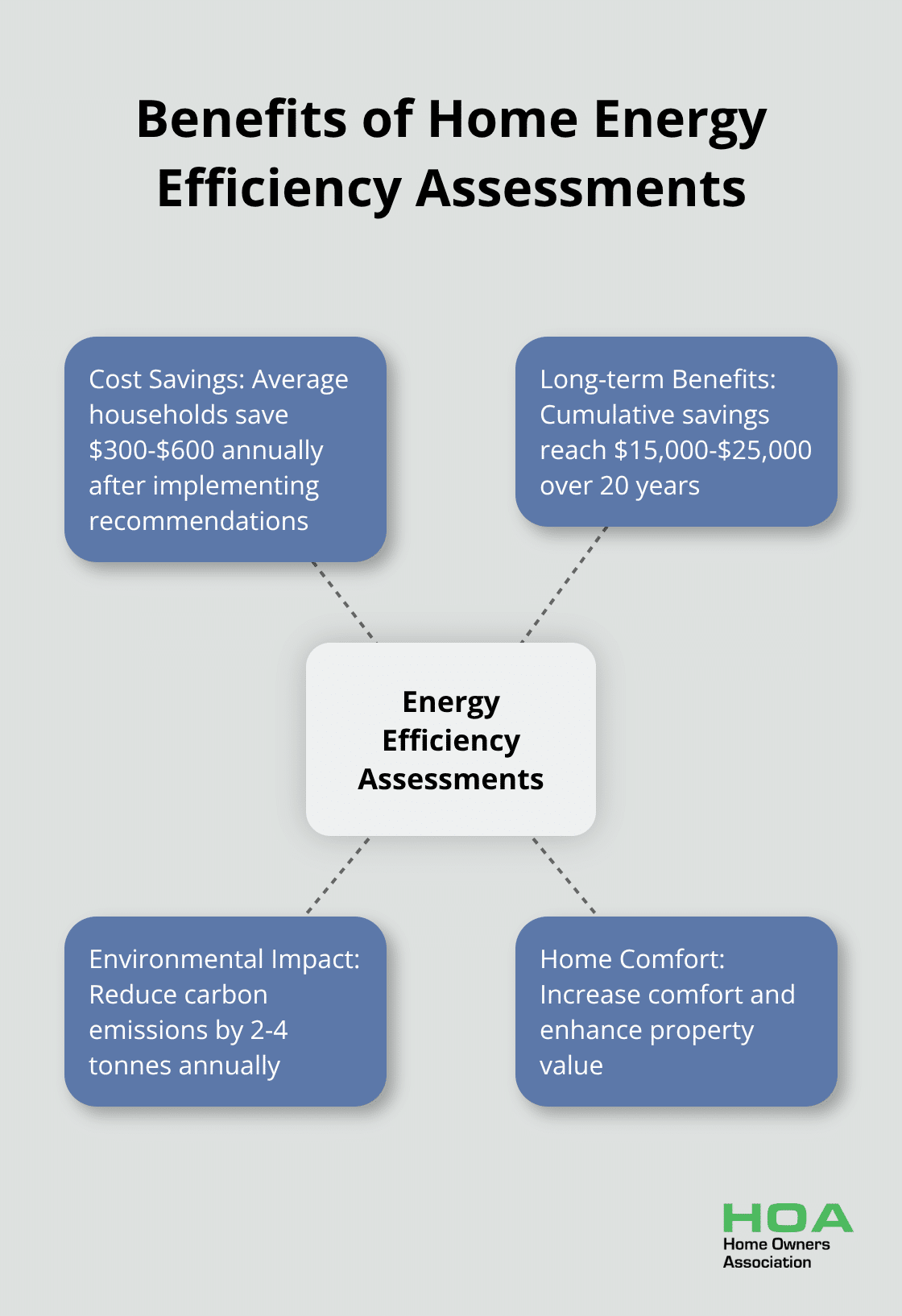
Schedule a professional home energy efficiency assessment within the next 30 days to start your improvement journey. Document your current energy bills to establish baseline measurements, then implement quick wins like LED conversions and weatherstripping while you plan larger improvements. We at Home Owners Association support homeowners with expert guidance throughout their improvement projects, and your investment in energy efficiency pays dividends through lower bills, increased comfort, and enhanced property value for decades ahead.


